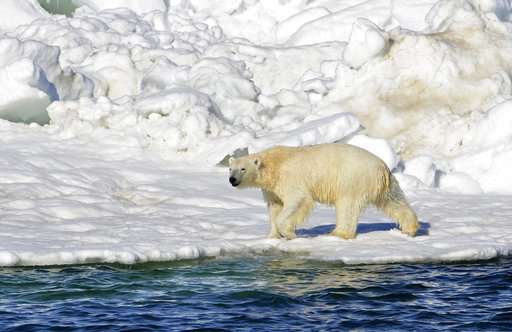Quota raised for subsistence hunting of Chukchi polar bears

Polar bear hunters in remote villages on the coast of the Chukchi Sea will have higher harvest quotas next year, a sign of the health of the region's bear population.
The U.S.-Russia Polar Bear Commission increased the possible harvest level for bears in the Chukchi Sea from 58 to 85 bears. The quota is split between the two countries, although all polar bear hunting, including subsistence hunting, remains banned in Russia.
The commission met last week in Egvekinot in Chukotka, Russia, and heard new estimates of bear abundance by science advisers and recommendations by indigenous and local sources.
Katya Wassillie, executive director of the Alaska Nannut Co-Management Council, which represents Alaska tribes that hunt for polar bears, said a higher quota does not mean more bears will be killed.
"Our communities in the area of the Chukchi Sea polar bear had not met that quota consistently in the last 10 years," she said.
The United States in 2008 listed polar bears as a threatened species because of the loss of their primary habitat, sea ice, due to climate change.
Eric Regehr, a quantitative biologist at the University of Washington's Polar Science Center and co-chair of the Scientific Working Group that advised the commission, said researchers have not detected the same sorts of harmful trends in Chukchi bears that were found in polar bears of the southern Beaufort Sea population off Alaska's north coast.
Chukchi bears remain larger and fatter and have not seen downward trends in cub production and survival, according to new preliminary information on the health and numbers of bears.
"Those things appear good," Regehr said Friday.
The Scientific Working Group provided a range of 50 to 120 bears in its recommendation for a sustainable harvest, Wassillie said. The medium-risk range was 80 to 90 bears.
"The Russian government was comfortable right in the middle of that," she said.
Polar bear meat is a traditional food and hides incorporated in the United States can be used for handicrafts.
Russia banned polar bear hunting in 1956. The U.S.-Russia Polar Bear Commission was created by treaty in 2000 with the goals of conservation and restoration of traditional subsistence harvest by Native people of Chukotka.
A harvest management plan was drafted in 2014 and Chukotka Natives for several years have pushed to legalize hunting, Wassillie said.
"It's just a waiting game at this point," she said.
© 2018 The Associated Press. All rights reserved.














